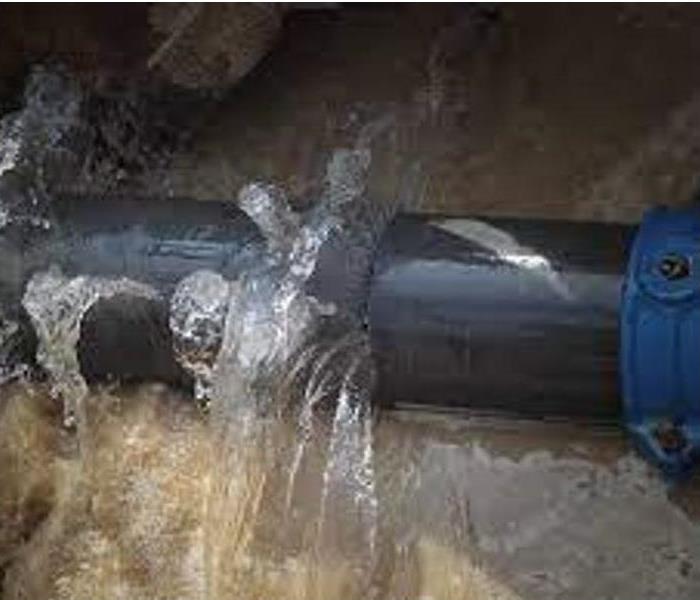What Business Owners Need To Know About Filing Insurance Claims For Burst Water Pipes
4/5/2022 (Permalink)
 Even if the water is shut off as quickly as possible, a pipe can disgorge several gallons of water into the walls and flooring.
Even if the water is shut off as quickly as possible, a pipe can disgorge several gallons of water into the walls and flooring.
Nothing can bring a business’s operations to a halt faster than the sudden burst of a water pipe. SERVPRO of Kendall County wants to prepare owners for the next steps after these incidents, including how to file a claim that will allow maximum coverage for water damage to a commercial building.
Why are Some Burst Pipe Claims More Costly Than Others?
The costs of water damage restoration can vary widely depending on the extent of the damage. Flooding that is contained to a single room may only require new carpet and pipe repair, while slow leaks can cause damage that goes through several floors—and possibly all the way to the building’s foundation. Even if the water is shut off as quickly as possible, a pipe can disgorge several gallons of water into the walls and flooring, causing partial or total closures until repairs can be made.
Many different factors can affect the extent of damage from a burst pipe, including:
- Business location. The most common cause of water damage from internal plumbing is frozen water pipes. When temperatures drop suddenly, standing water in the pipes expands, cracking the pipe or busting through its seams. Pipes may freeze even in areas where snow and ice is less common in winter, especially if pipes are not properly insulated.
- Building design and construction. The design and layout of the structure can impact both the likelihood and extent of water damage. Common structural factors that lead to burst pipes include unheated attics, failure to adequately insulate pipes between interior and exterior walls, and faulty installation of plumbing systems.
- Sprinkler systems. Fire suppression systems can save lives, but they can also make flooding insurance claims more costly. Water from sprinklers come from larger pipes, has a more forceful water flow, and is sprayed directly from overhead using a wide disbursement system.
- Multi-story buildings. Water will spread across floors, through porous surfaces, and down into the lowest recesses of a building, contaminating everything it touches along the way. If a pipe bursts on the upper floor of a hotel or an apartment complex, owners may have to replace drywall, lighting, flooring, and carpeting in every unit beneath the leak.
- Age. Older buildings increase both risks and costs associated with water damage, since older pipes are more likely to break and may need extensive updates when they do. If a pipe bursts in an older structure, owners will need to pay for any updates needed to bring the building into compliance with current building codes.





 24/7 Emergency Service
24/7 Emergency Service